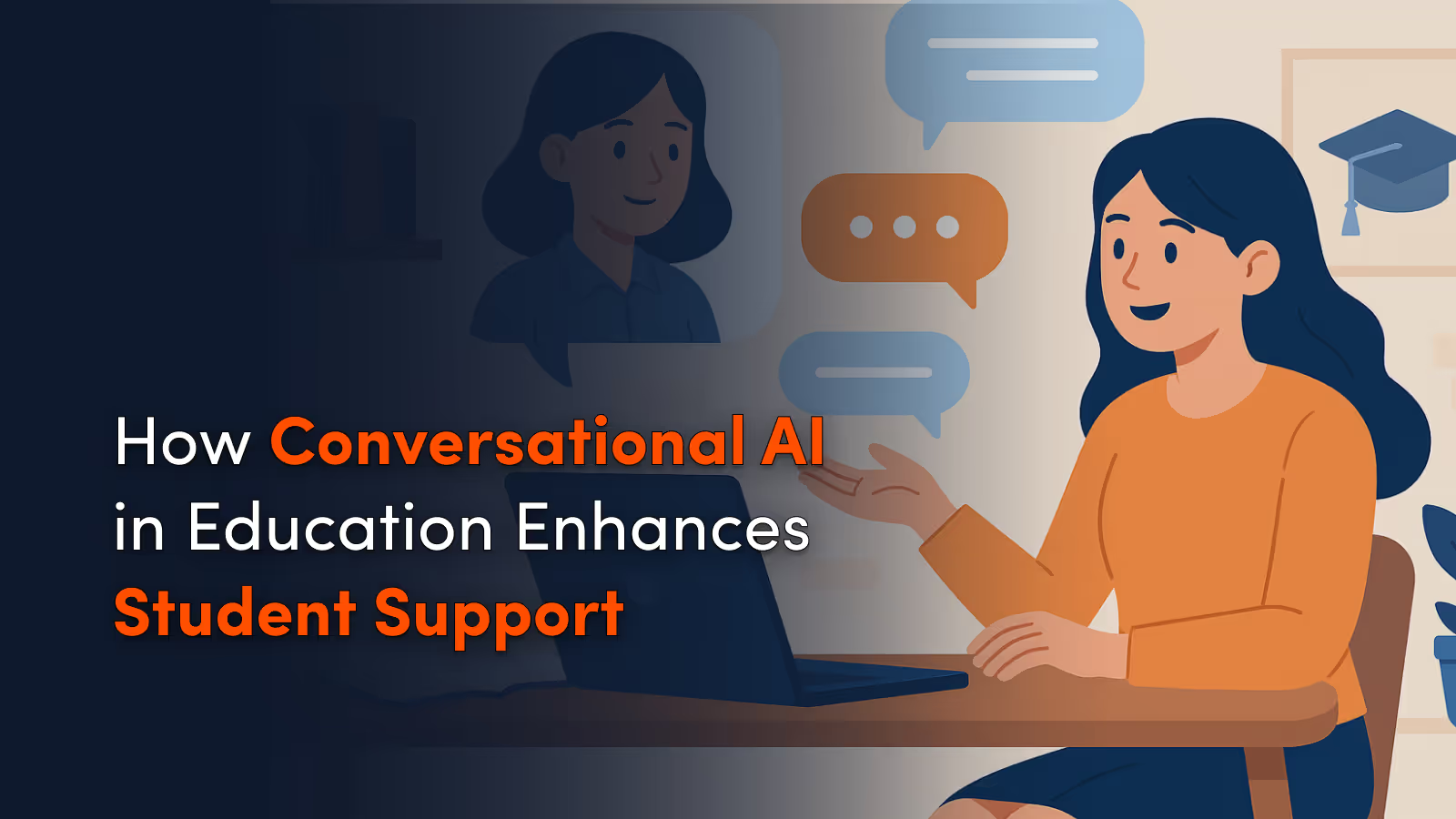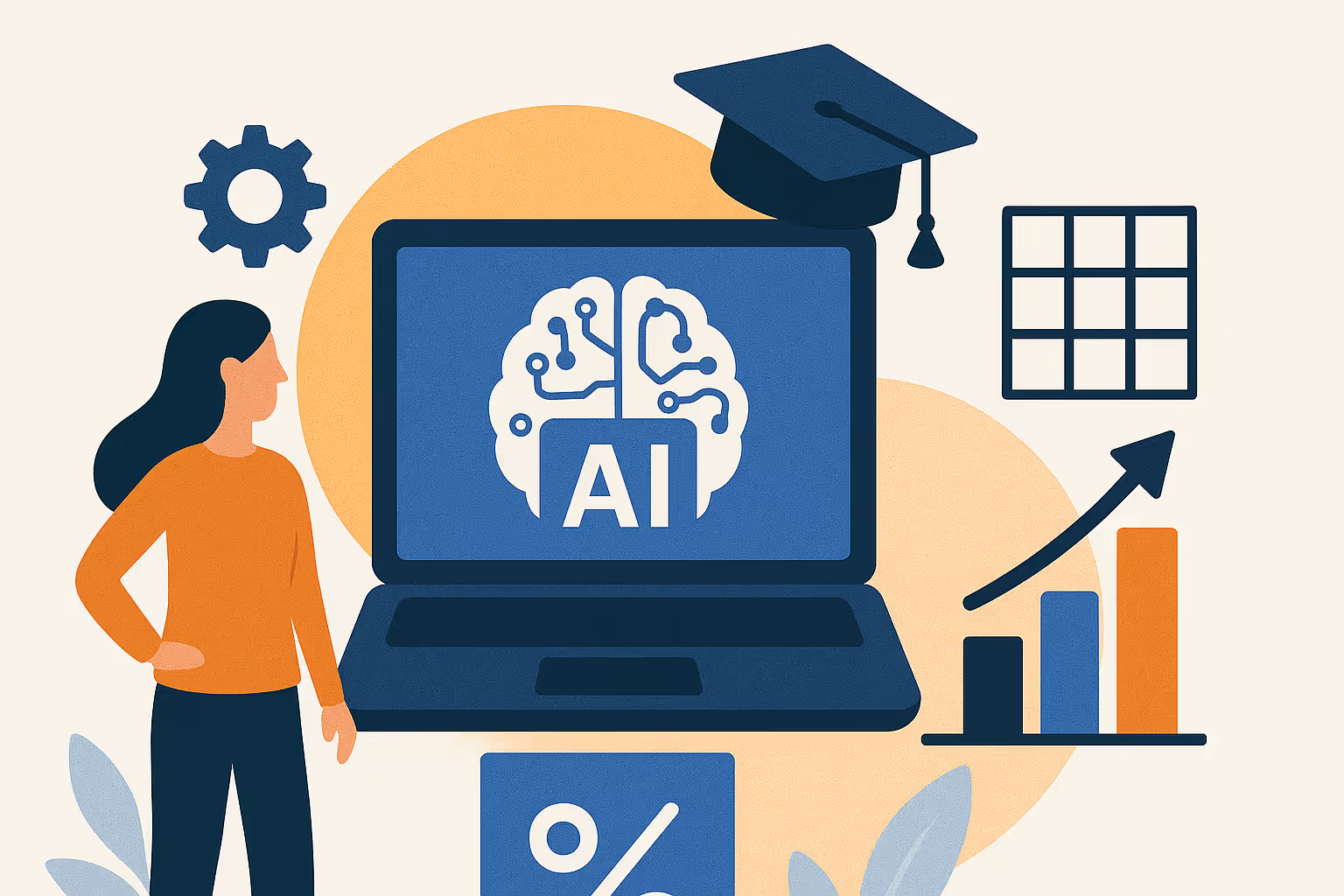About the Blog
Key Takeaways
- Conversational AI in education is revolutionizing how colleges engage students, offering scalable, 24/7 support.
- Starting small—with a targeted use case and a higher ed–friendly platform—sets the foundation for successful implementation.
- Data privacy, FERPA compliance, and ethical considerations for AI must be built into any deployment plan.
- AI trends in education point toward increased personalization, multilingual support, and smarter AI tutors shortly.
Conversational AI Is Reshaping Higher Education—Here’s How to Get Ahead
From streamlining administrative tasks to improving student engagement, AI in education is no longer a futuristic idea—it’s today’s reality. Colleges and universities are increasingly turning to AI tools to enhance communication, cut through inefficiencies, and provide students with support that’s fast, accurate, and always available.
One of the most transformative developments? Conversational AI. Whether answering enrollment questions at midnight or nudging students to complete their financial aid forms, AI chatbots for higher ed are changing the game when it comes to support and scalability.
In this guide, we’ll unpack what conversational AI means for higher education, how to implement it effectively, and what the future looks like as this tech continues to evolve.
What is Conversational AI in Education?
Conversational AI refers to AI tools that simulate human conversation, typically through voice or text interfaces. In higher ed, this means chatbots in colleges, virtual assistants, and AI-powered help desks that respond to student questions, guide them through processes, and direct them to the right resources.
These systems rely on machine learning and natural language processing (NLP) to understand input, learn from interactions, and improve over time. The more they’re used, the better they get.
For example, a university might deploy an AI chatbot that helps prospective students navigate the admissions process. Instead of emailing an advisor and waiting days for a reply, students can get instant answers about deadlines, required documents, or campus tours—any time, day or night.
How to Get Started with Conversational AI in Your Institution
Implementing conversational AI doesn’t require a full tech overhaul. It requires strategic planning, the right tools, and a student-first mindset. Let’s break it down:
Begin with a Targeted Use Case
Before diving into platforms and integrations, identify a specific challenge you want to solve. Where are students or staff getting stuck? A great place to start might be enrollment, financial aid, or IT support—areas flooded with repeat questions.
For instance, a simple FAQ chatbot that answers common questions about housing or registration can immediately reduce staff workload and improve student response time. This lets your team focus on more complex, human-centered issues.
By starting small, institutions can minimize risk and better evaluate how conversational AI fits into their broader digital strategy. Once proven, you can expand its scope to cover other departments.
Select a Higher Education–Friendly Platform
Not all AI platforms are created equal, especially when it comes to education. Look for tools built specifically for higher ed, which offer integration with student information systems, CRM, and learning platforms.
The ideal platform should allow for easy customization and be user-friendly enough for non-technical staff to manage. Bonus points for platforms with responsive vendor support and a strong community of higher ed users.
Remember, the goal isn’t just to implement a chatbot. It’s to implement one that works in harmony with your unique systems, workflows, and student needs.
Ensure Seamless System Integration
For conversational AI to be truly effective, it must connect with your existing tech stack. That includes your LMS, SIS, CRM, and even your library system. Without integration, your AI assistant is working with one hand tied behind its back.
Prioritize platforms that offer API compatibility and pre-built connectors. This makes it easier to push and pull data from systems your institution is already using—and reduces IT strain during implementation.
Effective integration also enables more personalized responses, helping the chatbot provide tailored support based on the student’s status, history, and academic progress.
Conduct a Pilot Program
Once the foundation is in place, run a pilot program with a small segment of students. This allows you to test functionality, collect feedback, and refine responses before scaling up.
Monitor user interactions, accuracy rates, and engagement metrics. Are students getting the help they need? Is the tone appropriate? Are there common questions going unanswered?
Use this data to improve the bot’s performance and address any blind spots. Piloting gives you space to learn and adapt, without impacting the broader student population.
Prioritize Data Privacy and Compliance
Handling student data responsibly is non-negotiable. Any AI implementation must align with FERPA compliance, GDPR, and other relevant privacy laws.
Ensure that vendors have strong security practices, encryption standards, and policies in place. Ask questions about data storage, user tracking, and access controls.
Establish internal guidelines for how conversational AI is used, and be transparent with students about what data is collected and how it’s used. Trust is critical when deploying AI in student-facing roles.
Benefits of Implementing Conversational AI in Education
- 24/7 Student Support: Students get help when they need it, not just during business hours.
- Reduced Administrative Workload: Staff can offload repetitive tasks and focus on more meaningful work.
- Faster Response Times: AI chatbots handle thousands of questions instantly, improving speed and satisfaction.
- Improved Student Engagement: With proactive nudges and reminders, AI for student engagement becomes a reality.
- Scalable Communication: Whether you’re serving 500 or 50,000 students, AI can grow with you.
Universities using AI-powered chatbots for admissions or financial aid have reported higher applicant satisfaction, improved conversion rates, and better staff efficiency.
Challenges and Ethical Considerations
- Data Privacy: Mishandling student data erodes trust and opens institutions to legal risks.
- Student Trust: Overuse of automation can feel impersonal; students still want a human connection.
- Implementation Costs: While ROI is strong, initial setup and training take time and budget.
- Bias in AI Models: AI tools can unintentionally reflect human biases present in training data.
- Transparency and Accountability: Institutions must be clear about when and how AI is being used.
- Overreliance on Automation: AI should assist, not replace, human advisors and educators.
To address these concerns, develop clear usage policies and engage stakeholders across IT, academics, and student affairs early in the planning process.
The Future of Conversational AI in Education
The future of AI in education is fast approaching—and it’s looking more intelligent and personalized than ever.
We’re already seeing the rise of AI tutors, capable of offering subject-specific help based on student performance. Soon, we’ll see AI tools that can support multilingual interactions, understand emotional tone via sentiment analysis, and even provide career advising or mental health triage.
As AI trends in education continue to evolve, expect more integration between conversational AI and other institutional systems. The goal? A seamless, intuitive, and responsive student experience across every touchpoint.
Conclusion
Conversational AI isn’t just a tech upgrade—it’s a transformative force that can improve how colleges support, engage, and retain students. With the right strategy, institutions can enhance experiences while gaining much-needed operational efficiency.
But success starts with thoughtful planning. From selecting the right tools to upholding ethical considerations for AI, institutions must approach implementation with care and clarity.
To stay ahead of the curve on AI tools, chatbots, and more, subscribe to Enrollify for fresh insights on the future of higher ed.
Frequently Asked Questions
How can AI chatbots be used in education?
They can answer FAQs, guide students through processes like admissions, and provide 24/7 support for common academic and administrative tasks.
What are conversational AI examples?
Examples include AI-powered admissions chatbots, virtual assistants for class registration, and help desk bots integrated with CRM systems.
How does conversational AI personalize student learning?
By using machine learning to analyze behavior and responses, AI can tailor messages, resources, and support based on each student's needs.










